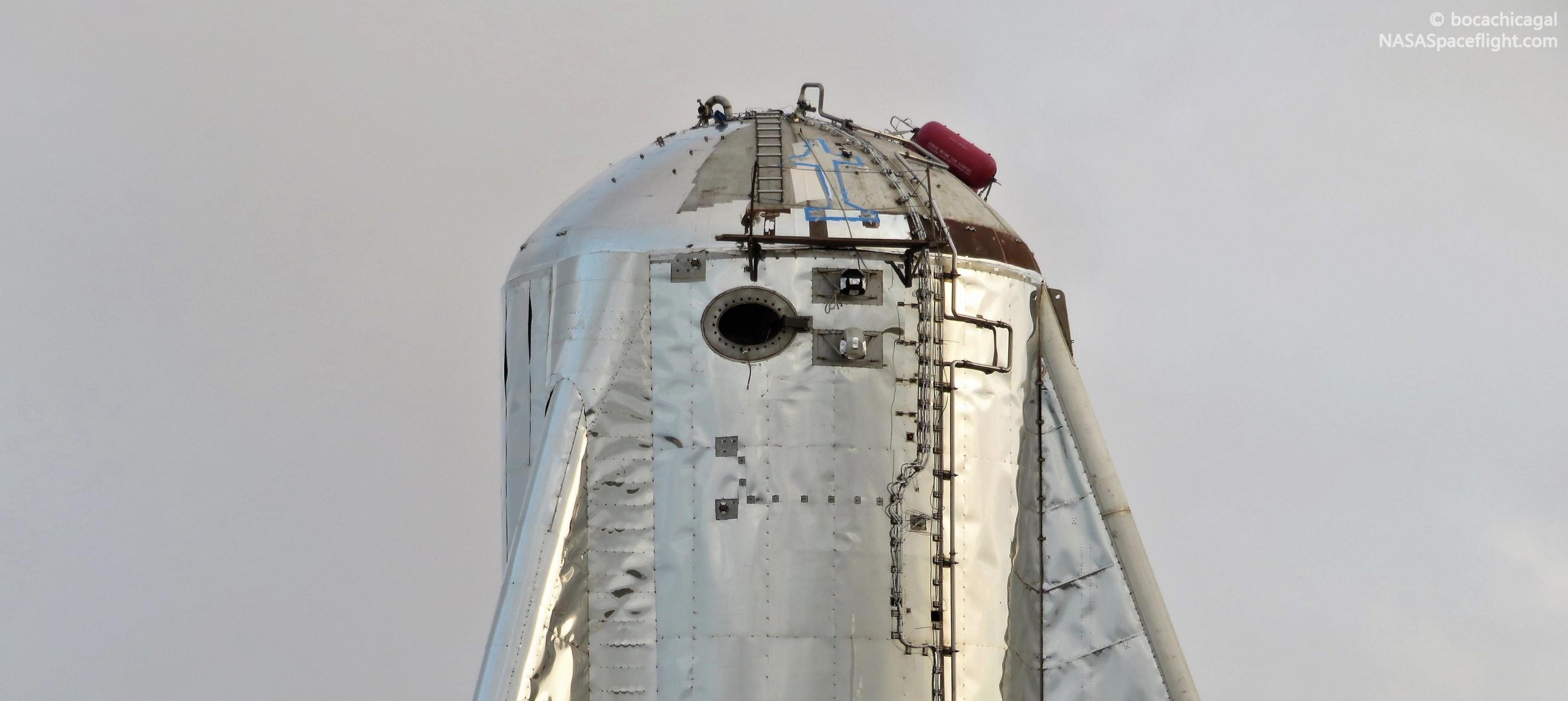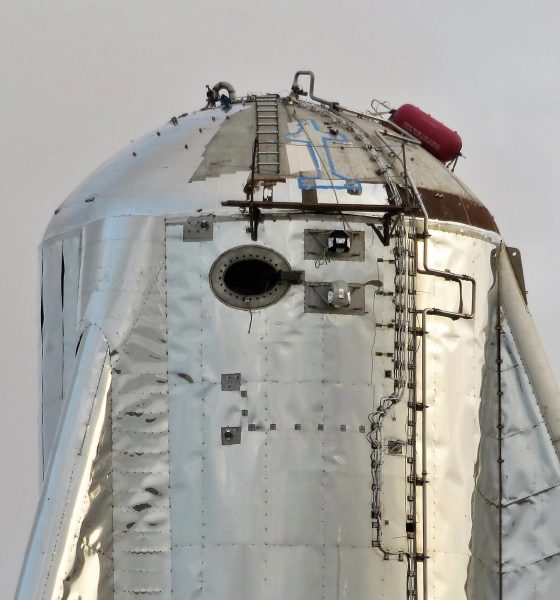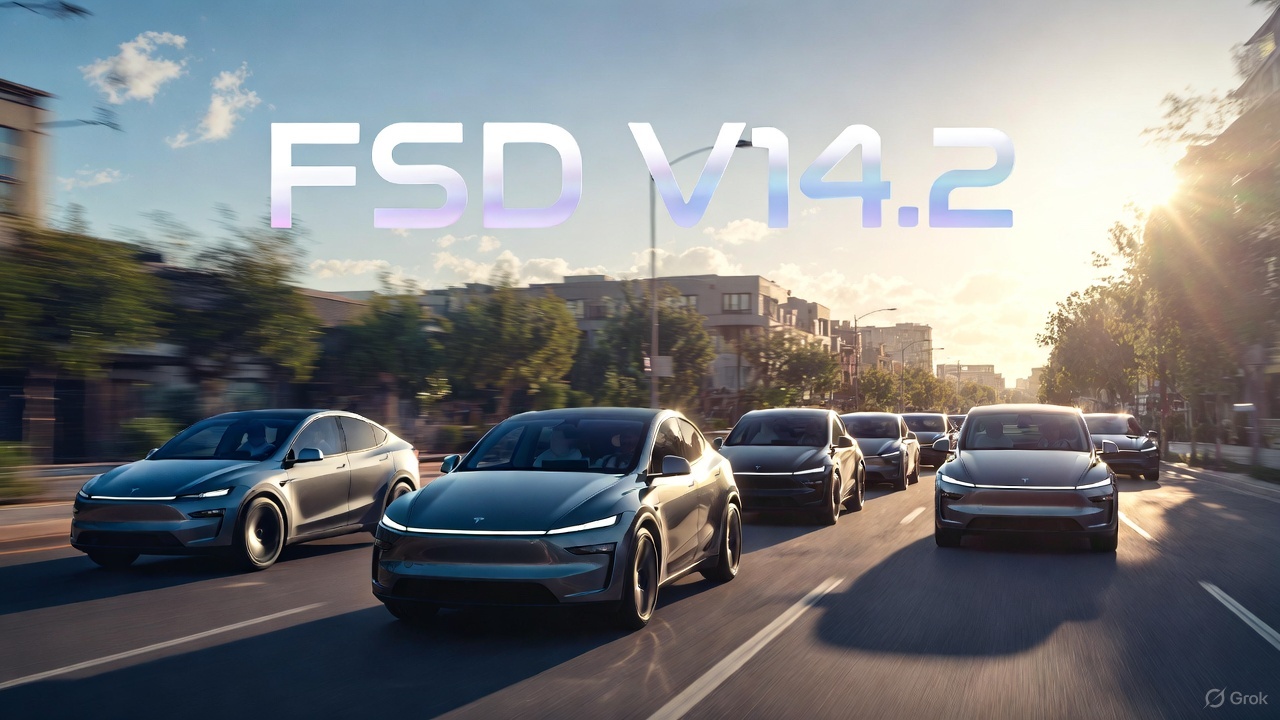

News
SpaceX’s Starhopper gains thruster pods as hop test preparations ramp up
Amid a flurry of new construction at SpaceX’s Boca Chica facilities, technicians have begun to install thruster pods on Starhopper in anticipation of the prototype’s first untethered flights.
According to CEO Elon Musk, Starhopper’s “untethered hover tests” will begin with just one Raptor engine installed, potentially allowing hops to restart within the next few weeks. SpaceX is currently testing Raptor SN03 (and possibly SN02) a few hundred miles north in McGregor, Texas, just a few hours’ drive south once the engine is deemed flight-ready. Meanwhile, Starhopper itself needs a considerable amount of new hardware before it can begin Raptor-powered flight testing.
A Falcon Raptor-powered Starship
Purely from a visible perspective, the most important component Starhopper is missing is a way to control its attitude and remain stable while under Raptor power, particularly critical for hovering. Enter the aptly-named attitude control system (ACS), essentially a pod of omnidirectional thrusters. SpaceX already happens to have its own extremely mature ACS proven over nearly two dozen successful Falcon 9 and Heavy booster landings, as well as every Falcon upper stage that has ever flown. SpaceX’s ACS is based on powerful nitrogen gas thrusters, known for their white puffs during Falcon 9 booster recovery and landing operations.
On May 6th and 7th, SpaceX began to install what looked like Falcon ACS pods on Starhopper. Curiously, of the two pairs of thrusters now installed, half appear to be taken directly off of older mothballed Falcon 9 boosters, while the other two seem to have been acquired from a Falcon 9 Block 5 rocket. The latter pods may very well have come from Falcon 9 B1050, the booster that unintentionally landed in the Atlantic Ocean last December.
Based on the asymmetric location of the first two pod groups, Starhopper’s ACS will probably use a tripod layout. Additionally, the reason for the thruster pairs – versus Falcon 9’s single pods – is likely simple: Starhopper is far heavier than a Falcon booster. To get the same level of control authority, SpaceX is thus pairing pods together to double the functional strength of Starhopper’s ACS.
This leads smoothly to the installation of two (likely soon to be three) new composite-overwrapped pressure vessels (COPVs). Starhopper already has two COPVs installed on the outside of its upper tank dome, now effectively confirmed to be helium containers needed to pressurize the vehicle’s methane and oxygen tanks. Based on the fact that Starhopper’s new ACS pods appear to have come straight from Falcon boosters, it’s safe to say that the 2 (or 3) new COPVs will supply the hopper’s thrusters with gaseous nitrogen.

The Ugly Starshipling
In general, this is just the latest chapter in the book of the oddity that is Starhopper. With helium tank pressurization and nitrogen ACS thrusters taken straight from Falcon 9, a major facet of SpaceX’s Mars architecture is entirely missing from the prototype. Known as autogenous pressurization, BFR was meant to use gasified versions of its onboard liquid oxygen and methane to pressurize its propellant tanks. In a similar vein, BFR was expected to integrated the same propellant into its ACS. Simply put, helium is simply out of the question if SpaceX wants to realize its reusable Mars transport architecture. Mars does have a minute quantity of nitrogen available in its already very thin atmosphere, but extracting hundreds or thousands of kilograms is impractical in the near-term, particularly if the first Starship have to carry all of their extraction equipment from Earth.
Although Musk has seemingly confirmed that Starship and Super Heavy will use ACS thrusters more akin to the Falcon family’s cold nitrogen gas pods, he did also confirm that autogenous pressurization would be a part of even the earliest iterations of the rocket. The move from carbon fiber to steel tanks likely made a major difference, as carbon composites have extremely limited heat resistance.
Without autogenous pressurization and propellant tanks closer to the thickness of orbit-capable Starships, Starhopper is really more of a mobile test stand for Raptor than anything else. The ungainly vehicle also offers SpaceX engineers an opportunity to test Starship/Super Heavy avionics in flight conditions, particularly with respect to controlling a real Raptor engine on the fly.

Check out Teslarati’s Marketplace! We offer Tesla accessories, including for the Tesla Cybertruck and Tesla Model 3.

Investor's Corner
Tesla analyst maintains $500 PT, says FSD drives better than humans now
The team also met with Tesla leaders for more than an hour to discuss autonomy, chip development, and upcoming deployment plans.

Tesla (NASDAQ:TSLA) received fresh support from Piper Sandler this week after analysts toured the Fremont Factory and tested the company’s latest Full Self-Driving software. The firm reaffirmed its $500 price target, stating that FSD V14 delivered a notably smooth robotaxi demonstration and may already perform at levels comparable to, if not better than, average human drivers.
The team also met with Tesla leaders for more than an hour to discuss autonomy, chip development, and upcoming deployment plans.
Analysts highlight autonomy progress
During more than 75 minutes of focused discussions, analysts reportedly focused on FSD v14’s updates. Piper Sandler’s team pointed to meaningful strides in perception, object handling, and overall ride smoothness during the robotaxi demo.
The visit also included discussions on updates to Tesla’s in-house chip initiatives, its Optimus program, and the growth of the company’s battery storage business. Analysts noted that Tesla continues refining cost structures and capital expenditure expectations, which are key elements in future margin recovery, as noted in a Yahoo Finance report.
Analyst Alexander Potter noted that “we think FSD is a truly impressive product that is (probably) already better at driving than the average American.” This conclusion was strengthened by what he described as a “flawless robotaxi ride to the hotel.”
Street targets diverge on TSLA
While Piper Sandler stands by its $500 target, it is not the highest estimate on the Street. Wedbush, for one, has a $600 per share price target for TSLA stock.
Other institutions have also weighed in on TSLA stock as of late. HSBC reiterated a Reduce rating with a $131 target, citing a gap between earnings fundamentals and the company’s market value. By contrast, TD Cowen maintained a Buy rating and a $509 target, pointing to strong autonomous driving demonstrations in Austin and the pace of software-driven improvements.
Stifel analysts also lifted their price target for Tesla to $508 per share over the company’s ongoing robotaxi and FSD programs.
Elon Musk
SpaceX Starship Version 3 booster crumples in early testing
Photos of the incident’s aftermath suggest that Booster 18 will likely be retired.

SpaceX’s new Starship first-stage booster, Booster 18, suffered major damage early Friday during its first round of testing in Starbase, Texas, just one day after rolling out of the factory.
Based on videos of the incident, the lower section of the rocket booster appeared to crumple during a pressurization test. Photos of the incident’s aftermath suggest that Booster 18 will likely be retired.
Booster test failure
SpaceX began structural and propellant-system verification tests on Booster 18 Thursday night at the Massey’s Test Site, only a few miles from Starbase’s production facilities, as noted in an Ars Technica report. At 4:04 a.m. CT on Friday, a livestream from LabPadre Space captured the booster’s lower half experiencing a sudden destructive event around its liquid oxygen tank section. Post-incident images, shared on X by @StarshipGazer, showed notable deformation in the booster’s lower structure.
Neither SpaceX nor Elon Musk had commented as of Friday morning, but the vehicle’s condition suggests it is likely a complete loss. This is quite unfortunate, as Booster 18 is already part of the Starship V3 program, which includes design fixes and upgrades intended to improve reliability. While SpaceX maintains a rather rapid Starship production line in Starbase, Booster 18 was generally expected to validate the improvements implemented in the V3 program.
Tight deadlines
SpaceX needs Starship boosters and upper stages to begin demonstrating rapid reuse, tower catches, and early operational Starlink missions over the next two years. More critically, NASA’s Artemis program depends on an on-orbit refueling test in the second half of 2026, a requirement for the vehicle’s expected crewed lunar landing around 2028.
While SpaceX is known for diagnosing failures quickly and returning to testing at unmatched speed, losing the newest-generation booster at the very start of its campaign highlights the immense challenge involved in scaling Starship into a reliable, high-cadence launch system. SpaceX, however, is known for getting things done quickly, so it would not be a surprise if the company manages to figure out what happened to Booster 18 in the near future.
News
Tesla FSD (Supervised) is about to go on “widespread” release
In a comment last October, Elon Musk stated that FSD V14.2 is “for widespread use.”

Tesla has begun rolling out Full Self-Driving (Supervised) V14.2, and with this, the wide release of the system could very well begin.
The update introduces a new high-resolution vision encoder, expanded emergency-vehicle handling, smarter routing, new parking options, and more refined driving behavior, among other improvements.
FSD V14.2 improvements
FSD (Supervised) V14.2’s release notes highlight a fully upgraded neural-network vision encoder capable of reading higher-resolution features, giving the system improved awareness of emergency vehicles, road obstacles, and even human gestures. Tesla also expanded its emergency-vehicle protocols, adding controlled pull-overs and yielding behavior for police cars, fire trucks, and ambulances, among others.
A deeper integration of navigation and routing into the vision network now allows the system to respond to blocked roads or detours in real time. The update also enhances decision-making in several complex scenarios, including unprotected turns, lane changes, vehicle cut-ins, and interactions with school buses. All in all, these improvements should help FSD (Supervised) V14.2 perform in a very smooth and comfortable manner.
Elon Musk’s predicted wide release
The significance of V14.2 grows when paired with Elon Musk’s comments from October. While responding to FSD tester AI DRIVR, who praised V14.1.2 for fixing “95% of indecisive lane changes and braking” and who noted that it was time for FSD to go on wide release, Musk stated that “14.2 for widespread use.”
FSD V14 has so far received a substantial amount of positive reviews from Tesla owners, many of whom have stated that the system now drives better than some human drivers as it is confident, cautious, and considerate at the same time. With V14.2 now rolling out, it remains to be seen if the update also makes it to the company’s wide FSD fleet, which is still populated by a large number of HW3 vehicles.











